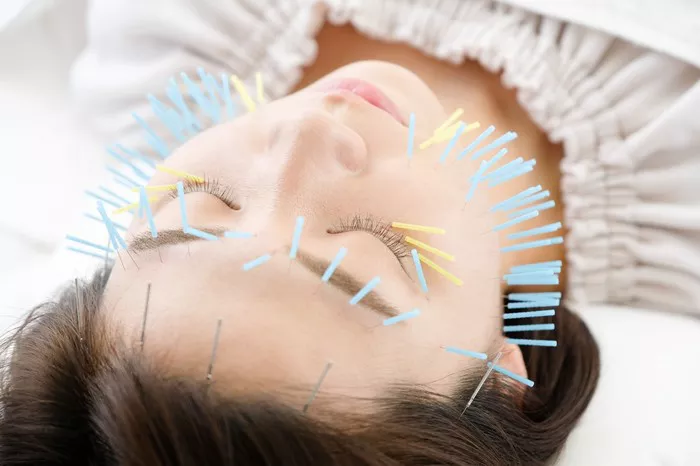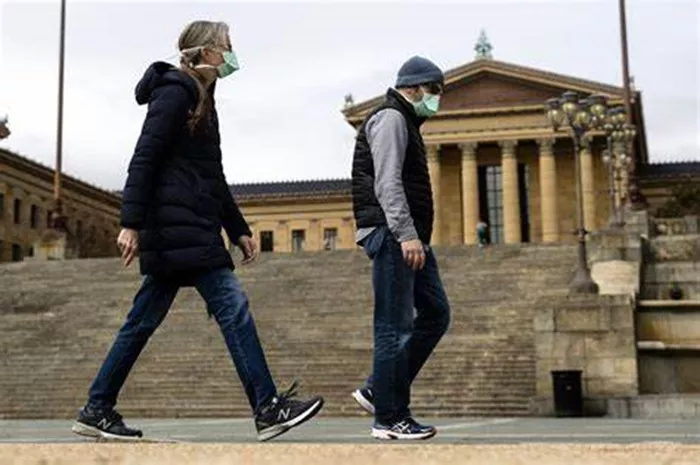Healthy, glowing skin is the goal of every beauty routine, but sometimes accidents happen. Whether it’s a shaving nick, a popped pimple, or a minor cut from a beauty tool, wounds are part of life. While most are small and heal on their own, others can become problematic if not properly cared for. Infection is one of the most common and serious risks. A simple wound can suddenly become red, swollen, painful, or filled with pus—signs that your body is sounding the alarm.
The healing process is a natural one, but it’s not always easy to know if a wound is progressing normally or if something is going wrong. The difference between a healing wound and an infected one can be subtle at first. But knowing what to look for can make all the difference in preventing scarring, pain, or even more serious complications. Whether you’re a skincare enthusiast or just someone who wants to maintain healthy skin, learning how to identify the stages of healing—and when a wound is in trouble—is an essential skill.
What Happens When a Wound Heals Normally?
When the skin is injured, the body immediately begins a complex healing process. The first stage is clotting. Blood rushes to the site to form a scab and stop bleeding. This is the body’s first protective measure, sealing the area off from harmful bacteria. Beneath the scab, your body is hard at work removing dead cells and germs while new tissue begins to form.
Next comes the inflammatory phase. This is when the area may look a little red and swollen. It’s actually a good sign. Your immune system is sending white blood cells to fight off potential infections and clean up debris. This stage usually lasts for a few days.
Then your skin begins rebuilding. New tissue, called granulation tissue, starts to form. It’s usually pink and smooth. Collagen production increases, helping the skin become stronger. As healing progresses, the edges of the wound pull together, and the skin starts to regenerate. Over time, the scab falls off, leaving behind new, sometimes tender, skin. This is the final phase known as remodeling. It can take weeks or even months depending on the size of the wound.
Signs Your Wound Is Healing Properly
There are clear indicators that your wound is on the right track. A mild amount of redness, swelling, and even a little clear or yellowish fluid is normal in the early stages. The area might feel warm to the touch for a few days as your body sends healing cells to the site. This warmth should gradually subside.
Another good sign is a reduction in pain. Most wounds hurt a bit in the beginning, especially during cleaning. But over time, discomfort should decrease, not increase. The wound edges may start to shrink, and new pink skin will form. It may even feel a bit itchy, which is often a sign that the skin is regenerating.
Scabbing is also a positive sign. As long as the scab is dry and firm, it’s protecting the wound underneath. Try not to pick at it. Pulling off a scab too early can reopen the wound and delay healing, or worse, invite infection. Let it fall off naturally.
Early Warning Signs of Infection
While some redness and swelling are normal in the early stages, worsening symptoms can indicate infection. If redness continues to spread after the first couple of days, or if it becomes more intense, that’s a red flag. Infected wounds often look inflamed beyond the immediate injury. The skin around the wound may become tight, shiny, and hot to the touch.
Pain that intensifies instead of subsiding is another sign. If the wound begins to throb or becomes painful to touch several days after the injury, it might be infected. Also, look for pus or cloudy discharge. A small amount of clear fluid is normal, but thick yellow, green, or foul-smelling fluid is not.
Fever, chills, or swollen lymph nodes near the wound (such as in the neck, armpits, or groin) can indicate that the infection is spreading beyond the skin. This requires medical attention right away. If the area becomes numb or if red streaks appear moving away from the wound, these are serious signs that the infection may be traveling through your lymphatic system.
Pus or Plasma: What’s the Difference?
It’s easy to mistake the fluids coming from a wound as pus, but not all drainage is bad. Plasma is a clear or slightly yellow fluid that naturally seeps from healing wounds. It helps carry nutrients, enzymes, and immune cells to the injured area. It usually appears in small amounts and dries into a light crust on the scab.
Pus, on the other hand, is thicker and usually yellow, green, or white. It’s a sign that your body is fighting off an infection. Pus contains dead white blood cells, bacteria, and tissue debris. If your wound begins producing pus several days after the injury or if the amount increases rapidly, you may need antibiotics or medical evaluation.
Sometimes, a wound may form an abscess—a pocket of pus under the skin. This is usually accompanied by swelling, pain, and warmth. Abscesses should never be popped at home, as this can push bacteria deeper into the skin. Instead, seek medical help to drain it properly.
The Role of Scabs and What They Tell You
Scabs are the body’s way of covering a wound and protecting it as it heals. If a scab is dry, intact, and not surrounded by red or swollen skin, it is usually a sign that things are going well. As new skin forms underneath, the scab will eventually lift and fall off on its own.
However, if the scab becomes soft, gooey, or has pus leaking from its edges, it could be hiding an infection underneath. Infected scabs often appear discolored, may bleed easily, or cause increasing pain. Don’t try to remove a scab prematurely. If you notice any foul odor or changes in the wound under the scab, consult a healthcare provider.
Picking at a scab also increases your risk of infection and scarring. If you’re tempted to scratch it because it itches, try applying a gentle moisturizer or using a clean cloth to apply mild pressure. Keeping the wound moist with petroleum jelly can sometimes reduce scab thickness and itchiness without disrupting the healing process.
How Proper Wound Care Affects Healing
Good wound care can mean the difference between quick healing and painful complications. Start by washing your hands before touching the wound. Use gentle soap and water to clean the area. Avoid harsh antiseptics like hydrogen peroxide unless advised by a doctor, as they can damage healthy tissue.
After cleaning, keep the wound moist but covered. Studies show that moist environments promote faster healing by supporting cell growth. Use a sterile bandage or gauze to protect the area from dirt and bacteria. Change the dressing daily or whenever it becomes wet or dirty.
Avoid makeup or skincare products near the wound, especially during the early healing stages. These products can irritate the area or introduce bacteria. If the wound is on your face, try using breathable bandages designed for sensitive skin to protect it during your regular routine.
When to Seek Medical Attention
Not every wound requires a trip to the doctor, but some signs should never be ignored. If your wound was caused by an animal or human bite, a dirty or rusty object, or if it is deeper than a quarter-inch, seek professional care. These types of injuries carry a higher risk of infection or may require a tetanus shot.
If the wound isn’t showing signs of improvement after five to seven days, or if symptoms worsen, medical evaluation is necessary. Chronic wounds—those that don’t heal in a reasonable amount of time—can result from underlying conditions like diabetes, poor circulation, or immune disorders.
Also, if the wound starts to smell bad, becomes increasingly painful, or you develop a fever, don’t wait. Early intervention can prevent the infection from spreading and reduce your risk of long-term damage or scarring.
Preventing Scarring and Promoting Skin Recovery
Once the wound begins to close, your focus may shift to preventing scars. How you treat your skin during this time can influence how well it recovers. Avoid direct sun exposure on healing skin, as UV rays can darken scars. Use a broad-spectrum sunscreen even if the skin appears healed on the surface.
Applying silicone gel or sheets can help flatten and fade raised scars. These products create a protective barrier that helps hydrate the skin and reduce collagen buildup. Massage the area gently once healing is complete to improve circulation and flexibility of the new skin.
Stay hydrated and eat a diet rich in vitamins A and C, zinc, and protein to support skin repair from the inside out. Smoking, alcohol, and poor nutrition can delay healing and worsen scarring, so it’s wise to take extra care of your body during this time.
Cosmetic Concerns and Skincare After Healing
Even when a wound heals without infection, it can leave behind marks. Not all scars are permanent, but many fade over time with proper care. Once your wound is completely healed and closed, consider incorporating products like vitamin E oil, niacinamide, or retinoids to help even out skin tone and texture.
If the wound was on your face or another visible area, you might feel self-conscious. Give yourself time to heal emotionally as well. Confidence and beauty are not just about flawless skin—they’re about how you carry yourself and how you treat your body with respect and care.
For persistent or deep scars, treatments like microneedling, chemical peels, or laser therapy may help. These should be done under the guidance of licensed professionals and not during the early healing stages. Always consult with a dermatologist before trying any invasive treatments.
Conclusion
Understanding the difference between a healing wound and an infected one is crucial not only for your health but also for your skin’s appearance. Healing should be steady, calm, and progressively better each day. Redness, warmth, and some fluid are expected early on—but when these symptoms worsen or linger, it’s time to pay attention.
Beauty starts with healthy skin, and healthy skin starts with knowledge. By recognizing the signs of normal healing and knowing when something feels off, you can take control of your skincare journey—even in the face of cuts, scrapes, or breakouts. Treat your skin kindly, act early when problems arise, and let every healed wound become a story of strength and self-care.
Related Topics



































